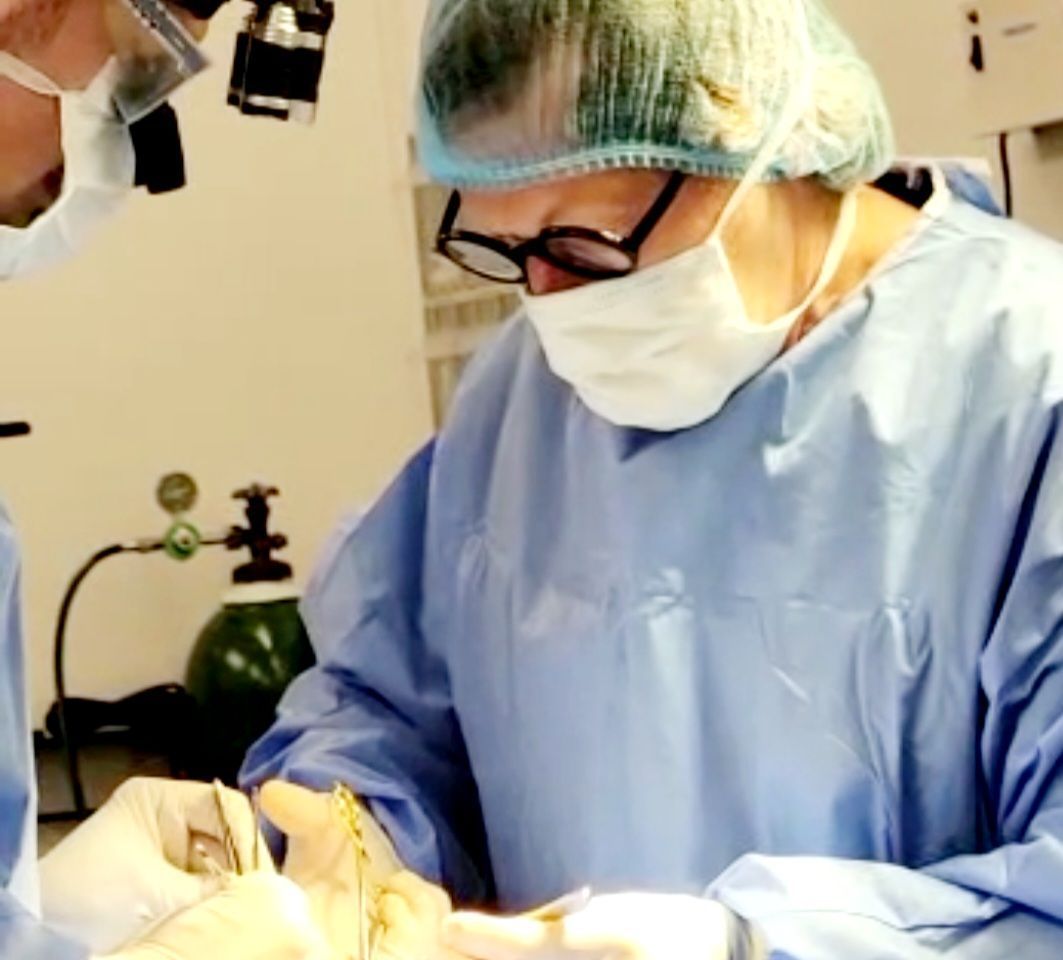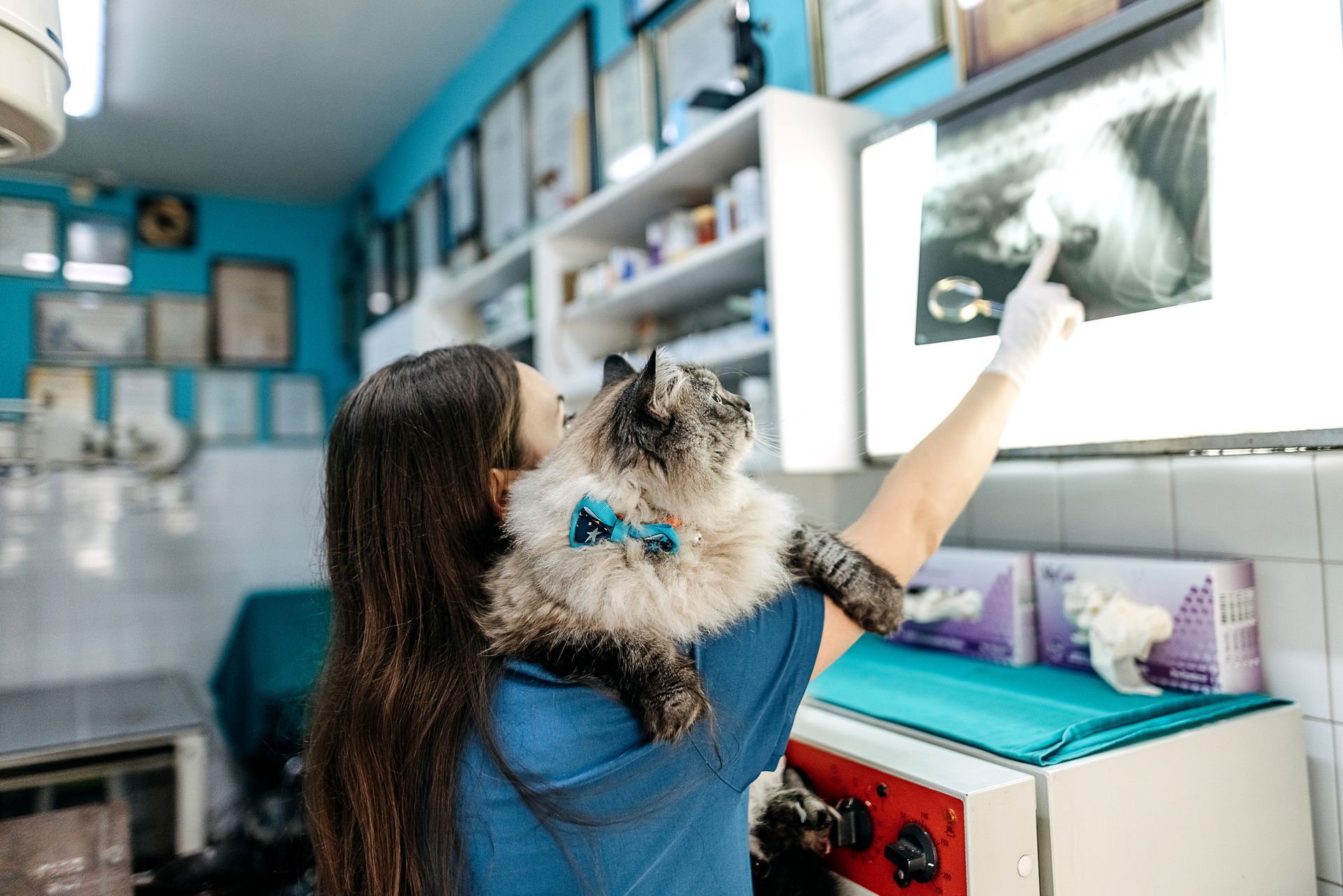Q: What is an intervertebral disk rupture?
A: Most commonly occurring in the back region of the spine, this is a sudden expulsion of the inner disk material into the area of the spinal cord. This often leads to the inability of the dog to use his/her back legs.
Q: What is the prognosis for recovery?
A: In dogs that can still feel their back toes, even if they are paralyzed, the prognosis for full recovery is about 95%. Once sensation is lost, this drops to about 50%. This is why it is important to seek therapy as soon as possible in dogs who can no longer use their back
legs.
Q: Why does this happen to dogs?
A: The disk is a shock absorber and is like a jelly donut. The inside of the disk is normally rich in water and the outer part is thick and fibrous. Although any dog can rupture a disk, certain breeds tend to have degeneration of their disks early in life. The inside of the disk loses water and becomes calcified. This thick, chalky material is now prone to bursting through the outer part of the disk, into the canal where the spinal cord sits.
Q: What is the difference between a ruptured disk, slipped disk, disk extrusion?
A: These terms are interchangeable. This kind of disk rupture is also called a Type I disk extrusion.
Q: What is involved in managing a dog with a ruptured disk in his/her back?
A: Here is a list of what is involved in a typical case:
- Physical examination
- Neurologic examination
- Preanesthetic bloodwork (to make sure anesthesia will be safe)
- Catheter placement,
- Monitoring (heart monitor, blood pressure monitor, oxygen level monitor, etc.)
- Anesthesia
- Imaging (typically MRI)
- Surgery
- Postoperative pain management
- Hospitalization
This may seem very involved because it is. The patient is constantly monitored by a trained licensed veterinary technician with support from a board-certified anesthesiologist. A board-certified neurologist interprets the MRI and performs the surgery. A board-certified radiologist also interprets the MRI. The MRI scan is carried out by a licensed MRI technologist.
Q: Is this scenario the same at every hospital?
A: Not necessarily. The description from the previous Q/A is specific to Elemental Pet Vets. In general, the standard scenario includes access to MRI, a board-certified neurologist or surgeon, and licensed veterinary technicians with expertise and experience in anesthesia.
Q: What is the difference between a board-certified neurologist and a board-certified surgeon?
A: A board-certified neurologist (Diplomate ACVIM, Neurology) is typically trained both in medical neurology and neurosurgery. Neurologists usually perform only neurosurgical procedures. Board-certified surgeons (Diplomate ACVS) are typically trained to perform multiple types of surgery, including back and neck surgery.
Q: What is the typical recovery time?
A: Most dogs who cannot walk with their back legs will recover that function within a few weeks after surgery. Dogs who have lost sensation to the back toes may or may not recover; if these dogs do recover, it generally takes longer than dogs who maintain sensation.
Expert Veterinary Neurosurgery Services in Syracuse, NY
At Elemental Pet Vets, we take immense satisfaction in being veterinary neurosurgeons dedicated to providing advanced neurological care for pets. Our team of highly skilled animal neurosurgeon is committed to using the latest and most effective treatments to improve the quality of life of your beloved pets.
Our veterinary neurosurgeon specialize in treating a wide range of conditions, including spinal cord injuries and brain disorders. As animal neurosurgeons, we understand how difficult it can be to watch your pet suffer, which is why we treat each pet with the utmost care and attention and offer compassionate and cutting-edge surgical solutions to help them recover.
Animal Neurosurgeons Near Syracuse, NY
Neurological disorders in pets can be overwhelming for pet owners, causing stress and uncertainty about the future. Without timely intervention from skilled professionals, these conditions may worsen, leading to irreversible damage. At Elemental Pet Vets, we understand the urgency and complexity of addressing such ailments. As trusted veterinary neurosurgeons in Syracuse, NY, we specialize in diagnosing and treating a wide range of neurological conditions, ensuring your pet receives the highest standard of care.
Why Choose Our Veterinary Neurosurgeons
Selecting the right veterinary neurosurgeon is critical for your pet’s recovery and well-being. At Elemental Pet Vets, we combine years of experience with a dedication to ongoing education, ensuring our methods remain at the forefront of veterinary medicine. Our facility is designed to provide a calming environment for pets during their treatment journey. Clients trust us not only for our technical proficiency but also for our empathetic approach to patient care. When searching for animal neurosurgeons in Syracuse, NY, look no further than our team of experts who are committed to restoring your pet’s quality of life.
Veterinary Neurosurgeon Services You Can Trust
Neurological conditions require prompt attention and specialized care. Don’t wait until symptoms escalate—reach out to Elemental Pet Vets, your trusted veterinary neurosurgeons in Syracuse, NY. Our team is ready to assist you with comprehensive evaluations and personalized treatment plans. Call us today at
607-291-4021 to ensure your pet receives the care they deserve!









